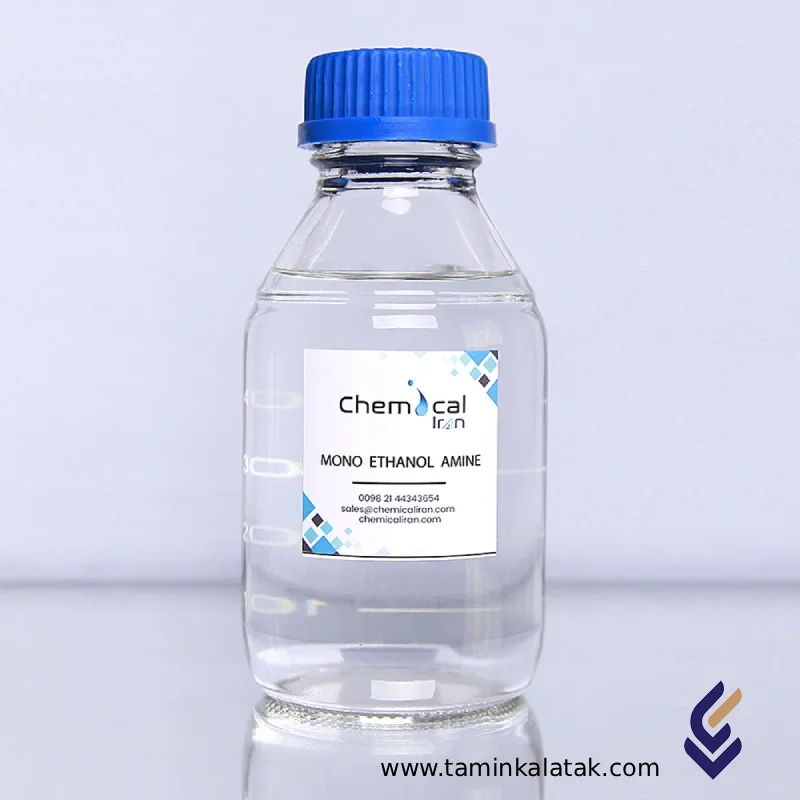Mono Ethanol Amin
Monoethanolamine (MEA), with the chemical formula C₂H₇NO and CAS No. 141-43-5, is a primary amine containing two reactive functional groups — an amino group (–NH₂) and a hydroxyl group (–OH).
It appears as a colorless, viscous liquid with a strong ammonia-like odor.
Due to its unique chemical reactivity, MEA is widely used in gas treatment, detergents, oil and gas, cement additives, catalyst production, and personal care formulations.
Chemical Structure
-
IUPAC Name: 2-Aminoethan-1-ol
-
Molecular Structure: Bifunctional molecule containing –NH₂ and –OH groups
-
Chemical Family: Simplest member of the ethanolamines
Physical and Chemical Properties
| Property | Typical Value |
|---|---|
| Appearance | Colorless, viscous liquid with ammonia-like odor |
| Density (20°C) | 1.0117 g/cm³ |
| Melting Point | 10.3°C |
| Boiling Point | 170°C |
| Vapor Pressure (20°C) | ≈ 64 Pa |
| pKa (25°C) | 9.50 |
| Water Solubility | Fully miscible with water and alcohols |
| Viscosity (20°C) | 23.2 mPa·s |
| Refractive Index (nD) | 1.4539 |
Key Advantages
-
Efficient absorber of acid gases (CO₂ and H₂S) in gas sweetening units
-
Adjustable neutralizing and emulsifying agent for detergents and personal care products
-
Versatile chemical intermediate in the synthesis of polymers, pharmaceuticals, dyes, and resins
-
Catalyst in polyurethane foam production and other industrial reactions
Limitations and Precautions
-
Highly corrosive and irritating – causes severe burns to skin and eyes on contact
-
Vapor irritation – may affect respiratory system with prolonged exposure
-
Oral toxicity: LD₅₀ (rat) ≈ 3320 mg/kg → moderate toxicity
-
Environmental hazard: harmful to aquatic life; neutralization or dilution required prior to disposal
Applications
1. Gas Treatment (Gas Sweetening)
Used for removing CO₂ and H₂S from natural gas, process gases, and flue gases in power plants.
2. Detergents and Cleaners
Functions as an emulsifier and pH regulator in industrial, cosmetic, and household formulations.
3. Cement and Construction
Acts as an additive to improve cement fluidity and reduce permeability.
4. Chemical Intermediate
Used in the synthesis of EDTA, pharmaceuticals, dyes, resins, and surfactants.
Safety and Handling
GHS Classification:
-
H314: Causes severe skin burns and eye damage
-
H335: May cause respiratory irritation
Personal Protective Equipment (PPE):
-
Chemical-resistant clothing
-
Nitrile gloves
-
Safety goggles or face shield
-
Respiratory protection in confined areas
Storage Conditions:
-
Store in a cool, dry, well-ventilated area
-
Keep away from heat sources, sparks, and oxidizing agents
-
Use tightly sealed containers with clear labeling
Emergency Measures:
-
Skin contact: Rinse immediately with plenty of water
-
Eye contact: Flush for at least 15 minutes and seek medical attention
-
Inhalation: Move to fresh air immediately
-
Spillage: Absorb with dry inert material and prevent vapor release
Monoethanolamine (MEA) is a key industrial chemical valued for its reactivity, versatility, and neutralizing properties.
It plays a critical role in gas purification systems, detergents, and chemical synthesis, provided that proper safety and handling measures are observed.
Applications
| Applications | , , , |
|---|
Mono Ethanol Amin
| Products | CAS number | Chemical formula | Grade | Vapor pressure | Physical appearance | Density (at 20°C) | Melting point | Solubility in water |
|---|---|---|---|---|---|---|---|---|
| Monoethanolamine | 141-43-5 | C₂H₇NO | (Industrial Grade), (Laboratory Grade) | About 64 Pa | Viscous, colorless liquid with an ammonia-like odor. | 1.0117 g/cm³ | About 10.3 °C | Completely miscible in water and many alcohols |







